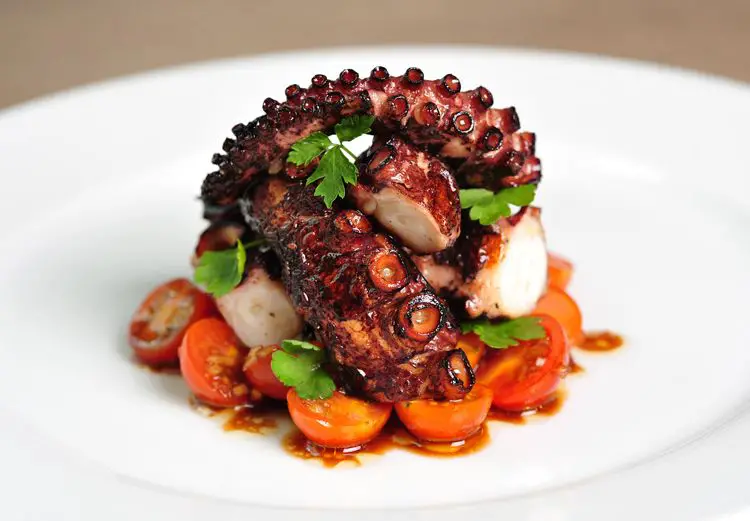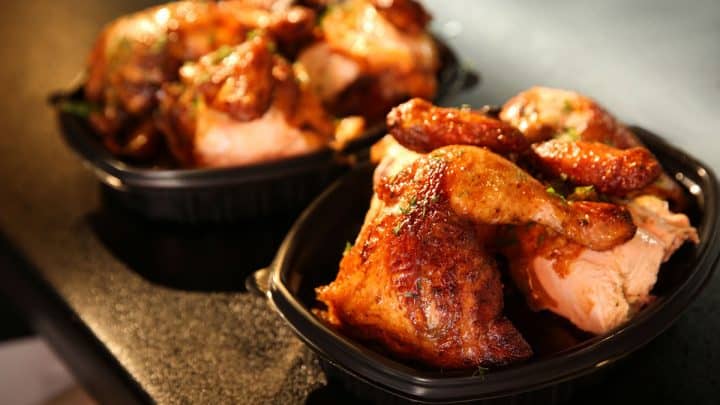How to Cook Richmond Sausages in a Frying Pan
Richmond sausages are a popular choice for breakfast and lunch. They have been produced since 1889 and were first made in Richmond, London. They remain popular today due to their delicious taste, versatility, and convenience. While pre-cooked sausages are available at most supermarkets, it’s worth learning how to cook your own.
This article will take you through the process of cooking Richmond sausages using a frying pan. We’ll cover everything from choosing the right type of sausage to serving suggestions and possible issues you may encounter during cooking.
Preparing the Sausages
Before we start, it’s important to choose the right type of Richmond sausage for your dish. There are various flavors available including classic pork sausages, spicy varieties, chicken sausages, and vegetarian options. Choose the flavor that suits your personal tastes.
If you’re using frozen sausages, thaw them out before cooking them in a frying pan. If you don’t have time to thaw them out overnight in the fridge or two hours at room temperature cut an opening on each side of its casing.
We also recommend cutting an opening on each side of its casing properly just enough not too deep or too shallow as this allows heat into the inside evenly while frying.
Seasoning and Flavoring
While Richmond sausages already come with some seasoning, you can add more flavor according to your preferences. Don’t be afraid to experiment with different spices and herbs like thyme or rosemary. Paprika is also great if you want a kick of spice.
Salt and pepper should also be added sparingly since Richmond sausages are already seasoned themselves. These seasonings can significantly impact how flavorful your dish is; therefore it’s essential not to overseason it.
Cooking Techniques
To ensure that your Richmond sausage is cooked evenly throughout, make sure that the frying pan is heated up evenly. Coat it with oil, we’ve found that vegetable or sunflower oil works exceptionally well, and when it gets hot, add your sausages.
Choose between a skillet or griddle when cooking; this can impact the heat distribution to your sausages. A skillet’s sides are high, so while they will cook the sausages from all angles, steam will be trapped inside creating soft casings. A griddle allows for more air to circulate around your sausages resulting in seared sausage cases on both ends; you might want to flip the sausage every few minutes in these cases.
Pre-Cooking Preparation
To prevent uneven cooking and steaming of the sausage’s casing during cooking, prick or score them before starting. Scoring the outside tips of Richmond sausages with a knife prevents them from plumping up while cooking – thus ensuring even heating throughout its length.
Use tongs or spatulas when turning the sausages in a frying pan as puncturing it with a fork could mean losing some of their juices making them dry and rubbery upon consumption.
Another way to make your Richmond sausages enjoyable is to add sauce during and after the cooking process. Mustard, ketchup, barbecue sauce, maple syrup are excellent choices for adding flavor.
Adjustments During Cooking Process
It’s essential always to keep an eye on the heat level whilst watching for signs of browning that indicate overcooking/burning. Turning down heat if needed will help ensure even cooking constancy throughout all portions of meat without noticeable burnt marks.
In case you observe browning too quickly or see any unsightly burnt marks while preparing: instead of covering with lids- use splatter screens around frying pans will help reduce grease downfalls spills on stovetops and avoid leaving smoke stains on walls nearby.
Serving Suggestions
Choose side dishes that complement your Richmond sausage. For spicy varieties, a side salad could balance the heat. Alternatively, creamy mashed potatoes or baked beans work great with classic pork sausages.
Add condiments such as grilled onions, jalapeños, mayonnaise, and salsa according to your preferences.
If you’re looking to impress guests at dinner parties, we suggest pairing your freshly cooked Richmond sausages on wooden platters with specific toppings such as Dijon mustard or honey glazed sauce to emphasize its natural savory flavors.
Possible Issues and Remedies
During your cooking process, several issues may arise. If you notice that the sausage casing turns out tough after cooking continues cooking over low heat until it becomes soft; it can also be an indication of undercooking so make sure to establish contact correctly and check its internal temperature first before frying.
Should you find yourself in a spot where your sausage looks unevenly browned on some sides: quick fixes in critical situations could leave them submerged in boiling water for a few minutes to even them out better while avoiding more prolonged exposure of sogginess through direct steaming methods like microwaving or air-frying,
Conclusion
Cooking Richmond sausages is an excellent skill to have if you wish to enjoy delicious, flavorful sausages without worrying about additives and preservatives found in pre-made varieties.
We’ve run through preparation techniques such as scoring your sausage casings properly keep uniform internal temperatures during cooking preserving all juices within meats for maximum enjoyment by using tongs instead of puncturing them when turning frying pans around. By adding appropriate seasonings like salt & pepper spices/herbs can give even mouthfuls throughout every piece roasted slowly but surely until perfection! When chosen sides match accordingly with different flavor variants present serve alongside toppings presentation ideas impress friends family dinner parties alike – Enjoy!
Remember: Take extra care not too many salts since Richmonds are already seasoned prepping it properly before cooking ensures uniform cooking. Choose your favorite flavors and spicing, turn sausages using tongs or spatulas, and choose side dishes that match well with these tasty sausages. If there is a problem, there is always a solution, remember to be resourceful and creative when cooking your Richmond sausages. Soon enough, your love for homemade meals will make every bite even more satisfying!
Q&A
Q1: Can I cook Richmond sausages directly from the freezer?
Yes, you can cook Richmond sausages directly from the freezer. However, it may take a bit longer to cook than thawed sausages. Make sure the sausages are cooked through before serving.
Q2: Should I use oil or butter to fry my Richmond sausages?
Either oil or butter can be used to fry Richmond sausages in a frying pan. Oil will provide a crispier texture while butter adds a rich flavor. Use whichever you prefer and make sure the pan is heated over medium heat.
Q3: How do I prevent my Richmond sausages from bursting while cooking?
To prevent Richmond sausages from bursting while cooking, prick them with a fork on all sides before frying. This allows steam to escape and prevents sausage casings from breaking open.
Q4: What other ingredients can I pair with my cooked Richmond sausages?
There are many ingredients that pair well with cooked Richmond sausages. Some popular options include onions, peppers, mushrooms, and potatoes. You can also serve them with condiments like ketchup or mustard for added flavor.






